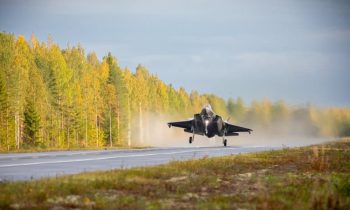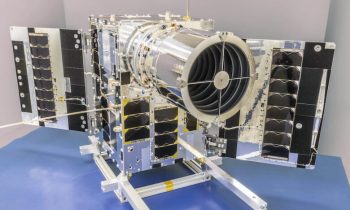Giant US aerospace and defence group Boeing and Norwegian defence and aerospace company Nammo have successfully test fired an artillery projectile powered by a ramjet. Announced on Tuesday, the test took place on June 28, at Norway’s Andøya Test Centre.
A ramjet is a structurally simple form of jet engine, with no moving parts; such an engine is composed of an inlet, a combustor (with a fuel injector and a flame holder) and a nozzle. To work, a ramjet has to already be in forward motion, as it is this motion that forces air into its inlet. The inlet slows the air down, converting dynamic pressure (from velocity) into higher static pressure. In the combustor, fuel is mixed with the air and ignited. The exhaust gases from this combustion then pass out through a nozzle, shaped to accelerate the flow of these gases. As this exhaust flow has greater velocity than the flow of the outside air around the engine, it generates thrust. (In a ramjet, combustion and exhaust flow are always subsonic in velocity.)

With the projectile tested by Boeing and Nammo, the discharge of the artillery gun provided the initial forward velocity which enabled the ramjet to work. The test involved a 155 mm calibre Boeing ramjet projectile fired from a “cannon” (as Boeing described the gun). In the test, the ramjet successfully ignited, and the projectile demonstrated stability in flight, while the engine combustion process was “well-controlled”.
“We believe the Boeing Ramjet 155, with continued technology maturation and testing, can help the US Army meet its long-range precision fires modernisation priorities,” stated Boeing Phantom Works VP and GM Steve Nordlund. “This successful test is evidence that we are making great progress.”
“This is a historic moment for Nammo,” highlighted Nammo CEO Morton Brandtzӕg. “The test results demonstrate that ramjets are viable and can fundamentally change the future of artillery. We have great confidence in the ramjet concept. The test – with all aspects from cannon firing, to the projectile body, fins and trajectory all functioning perfectly – represents a real technological breakthrough in artillery, and a major success for Boeing, Nammo and the US Army.”
The two companies started the development of the ramjet projectile in mid-2019, funded under Phase I of the US Army’s XM1155 programme. Last year, they received a Phase II technology development contract.
The US Army is seeking long-range guided artillery projectiles, to be able to hit targets significantly deeper behind an enemy’s front line than conventional artillery can, but not as far as achievable using surface-to-surface missiles (which the US Army already has and is having new types developed, for future deployment). The ramjet 155 mm projectile is regarded as a hybrid between a shell and a missile. The current war in Ukraine has dramatically highlighted the huge importance of long-range but precision artillery, rocket and missile fire.



